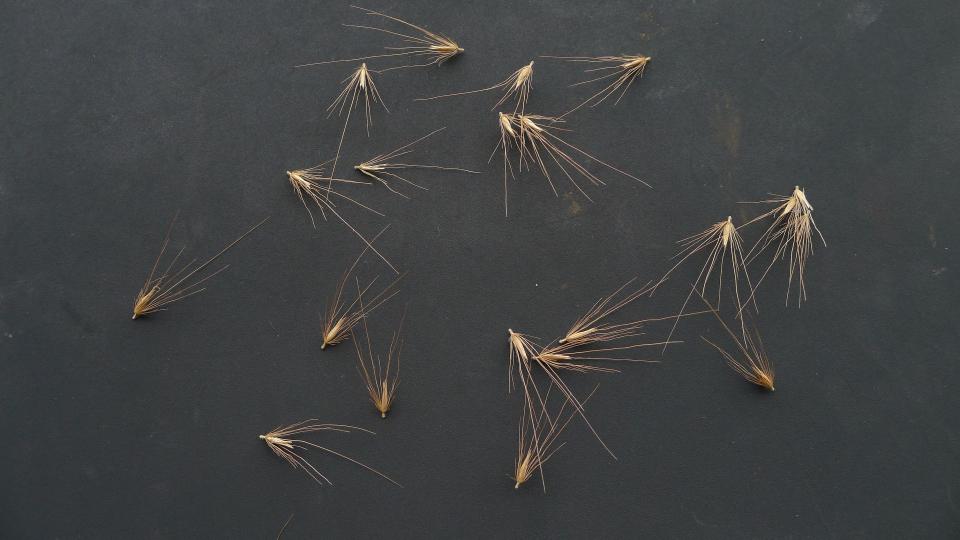It’s foxtail season — here’s how to protect your pet from foxtail injuries

Although rather inconspicuous looking as far as plants go — especially among much of the West’s desert vegetation — foxtails can cause serious health problems for dogs and outdoor cats.
Foxtails refer to the small seed structures that are found at the top of certain types of grass stalks, including foxtail grass. The seeds are barbed, making it easy for them to travel in only one direction once embedded, thus making them difficult to remove.
Related
How are foxtails dangerous to dogs?
According to the Humane Society of Utah, foxtails will not dissolve once lodged in your pet’s body and can cause pain, infection, abscesses and death.
“So far this season, we’ve been hearing increasing reports of people having to take their dogs to the veterinarian because of foxtail grass being embedded in their paws, ears, or even their nostrils or groin,” the Humane Society of Utah wrote in an Instagram post.
The organization warns that foxtails can be potentially fatal depending on how they’ve entered a dog’s body and where they migrate once there. If foxtails are eaten or inhaled by a dog, they can potentially damage the intestinal tract or puncture a lung. Depending on the severity, surgery may be required in order to remove the foxtails.
Where do foxtails grow?
Foxtails are typically found during the late spring, summer and early fall months and grow almost everywhere throughout the United States, according to Preventative Vet.
They can be found in fields, yards, and along hiking trails, sidewalks and roadways — in fact, you’ll likely be able to spot some on your next outing with your dog.
Foxtails may still be attached to the tops of grasses, or may have already fallen to the ground — the pronged seeds are actually designed to burrow into the ground, per petMD.
What do foxtails look like?
Foxtail grass seeds got their moniker from their bushy, fanned appearance, similar to that of a fox’s tail. How can you positively identify them? Check for sharp, pointy barbs. Keep in mind, as the weather warms up, foxtails may have a dry, tan appearance.
According to Pennsylvania State University, one of the biggest indicators of foxtails are the presence of awns.
“Check for the awns, which look like hairs coming off each tiny seed on the head. These are what gives foxtail its illustrative name. Some varieties may have very long and obvious awns, but others may have shorter awns that you need to look for,” PennState writes.

What are the symptoms of foxtail injuries in dogs?
First and foremost, always consult with your veterinarian if you are concerned. But according to pedMD, signs that your dog may be suffering from an embedded foxtail may include:
Head shaking.
Limping.
Pawing at the face.
Snorting or sneezing.
Excessive licking.
Lumps and bumps.
Redness or inflammation.
Related
How to help prevent your dog from getting foxtails
There are a few things to keep in mind when protecting your pet from foxtail seeds. One of the most important practices is giving your pet a thorough exam after being outdoors, especially in an area with foxtail grass.
Checking your dog’s ears, paws, mouth and coat could go a long way in prevention, especially with dogs that have long or curly hair, as these pets are especially vulnerable to foxtails.
“Remember to give your dogs a thorough once-over when venturing into outdoor areas with foxtail grass, and avoid it whenever possible by keeping pets on a leash,” the Humane Society of Utah advises.
If you suspect your dog has a foxtail injury, consult with a veterinarian to ensure the troublesome little hitchhiker is entirely removed.

